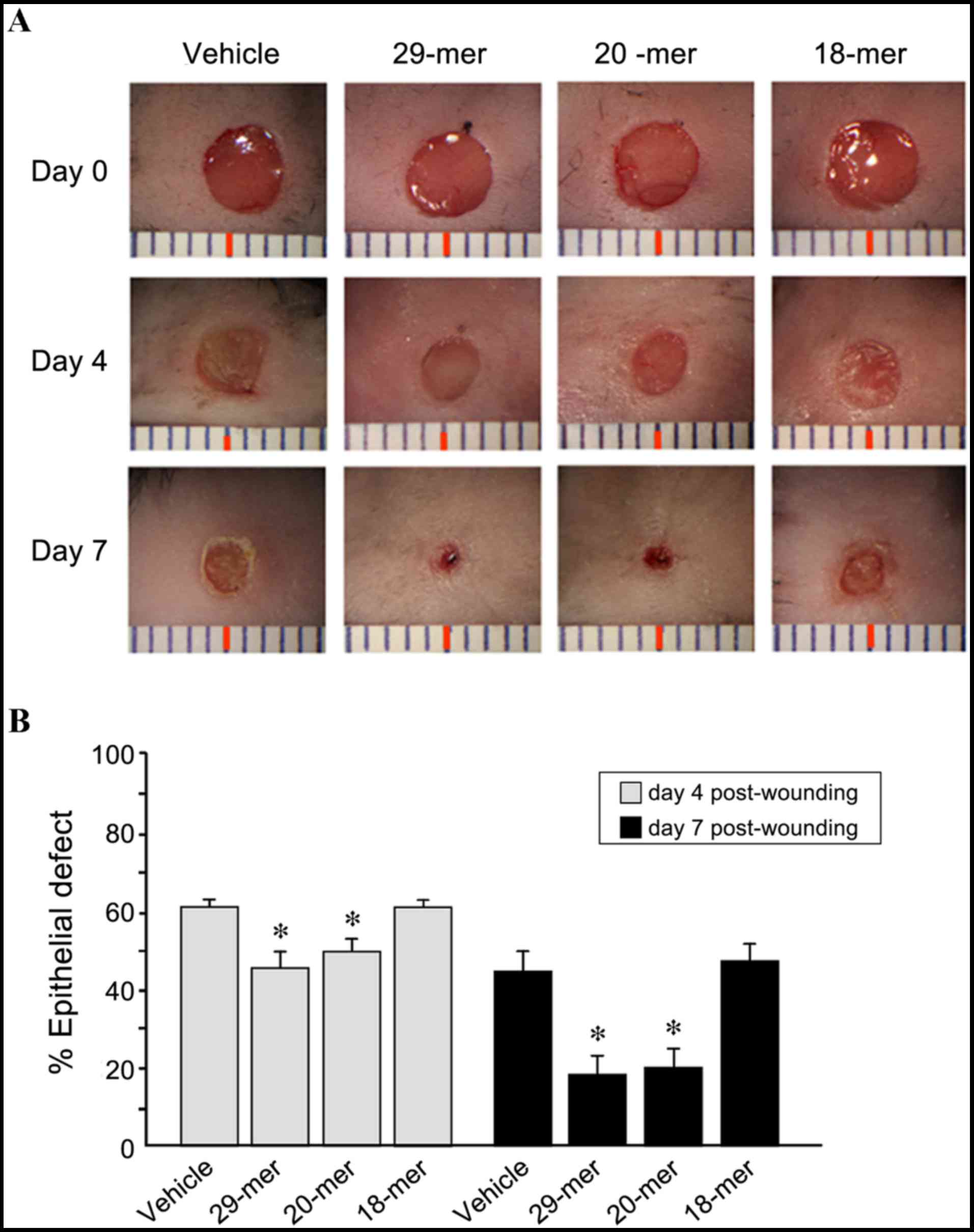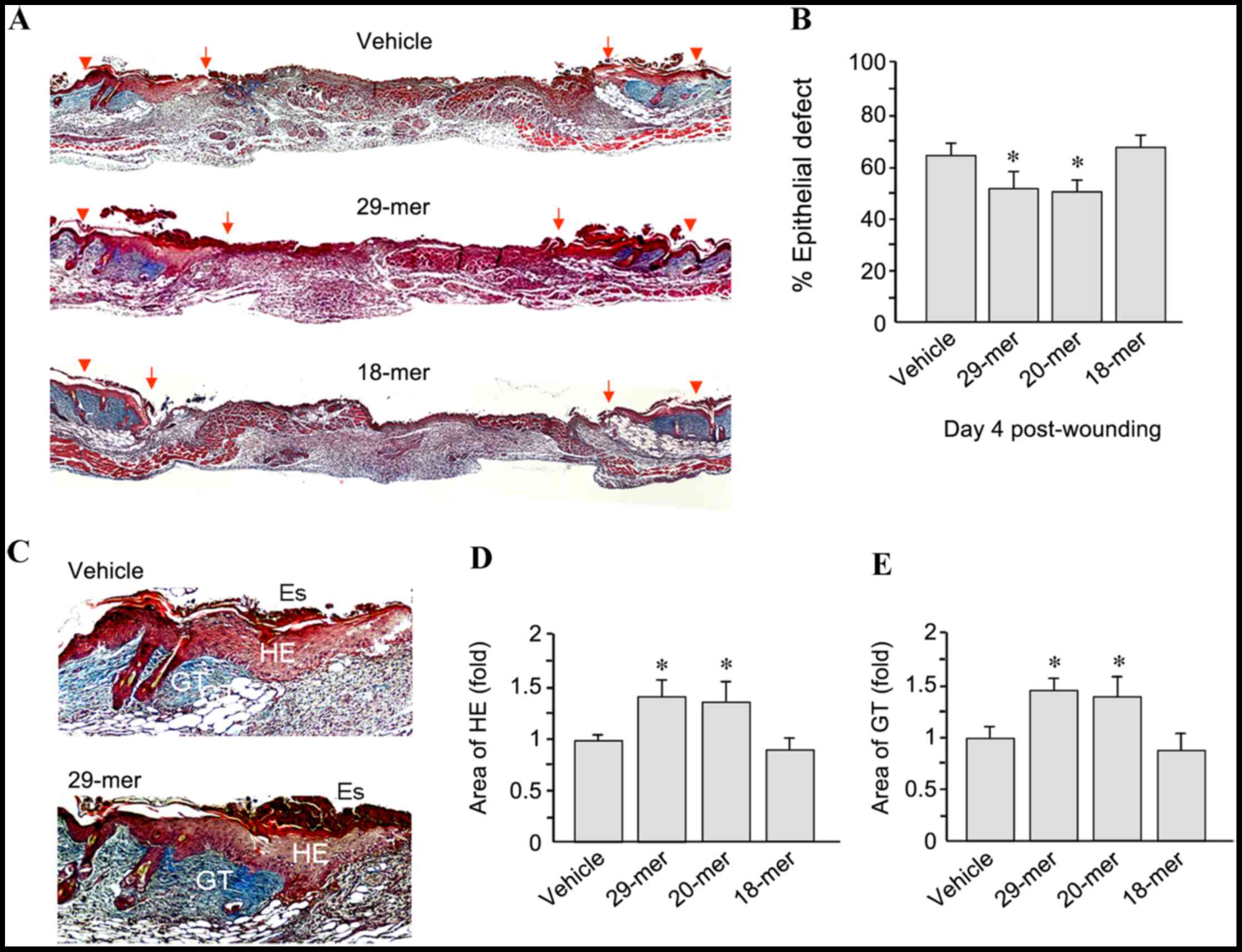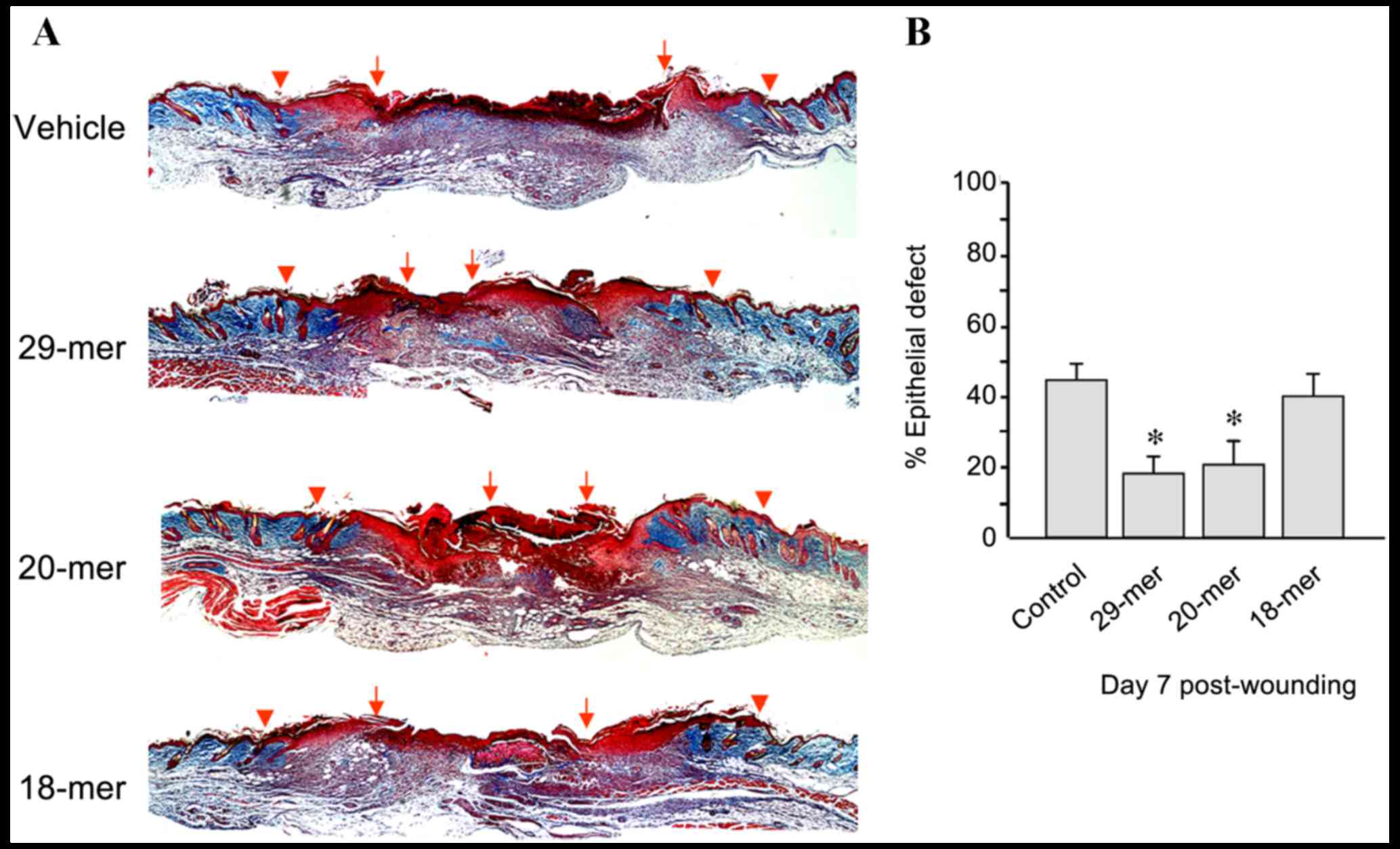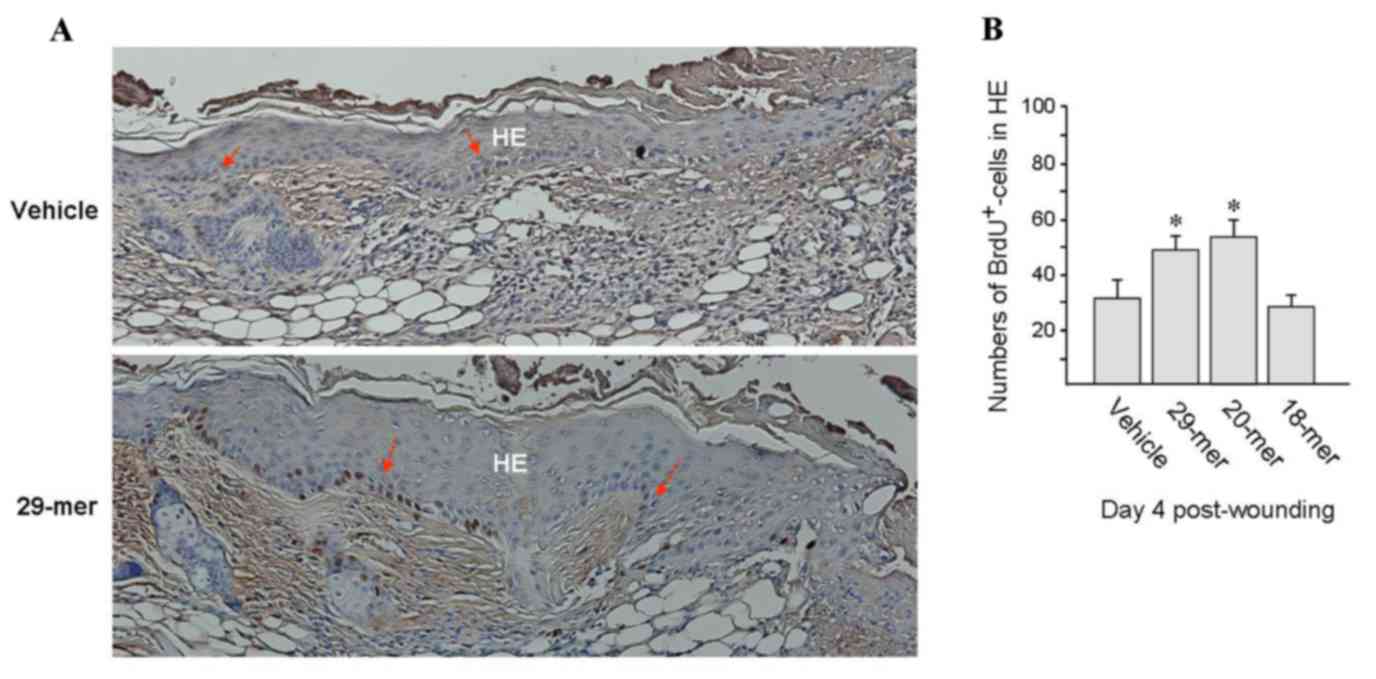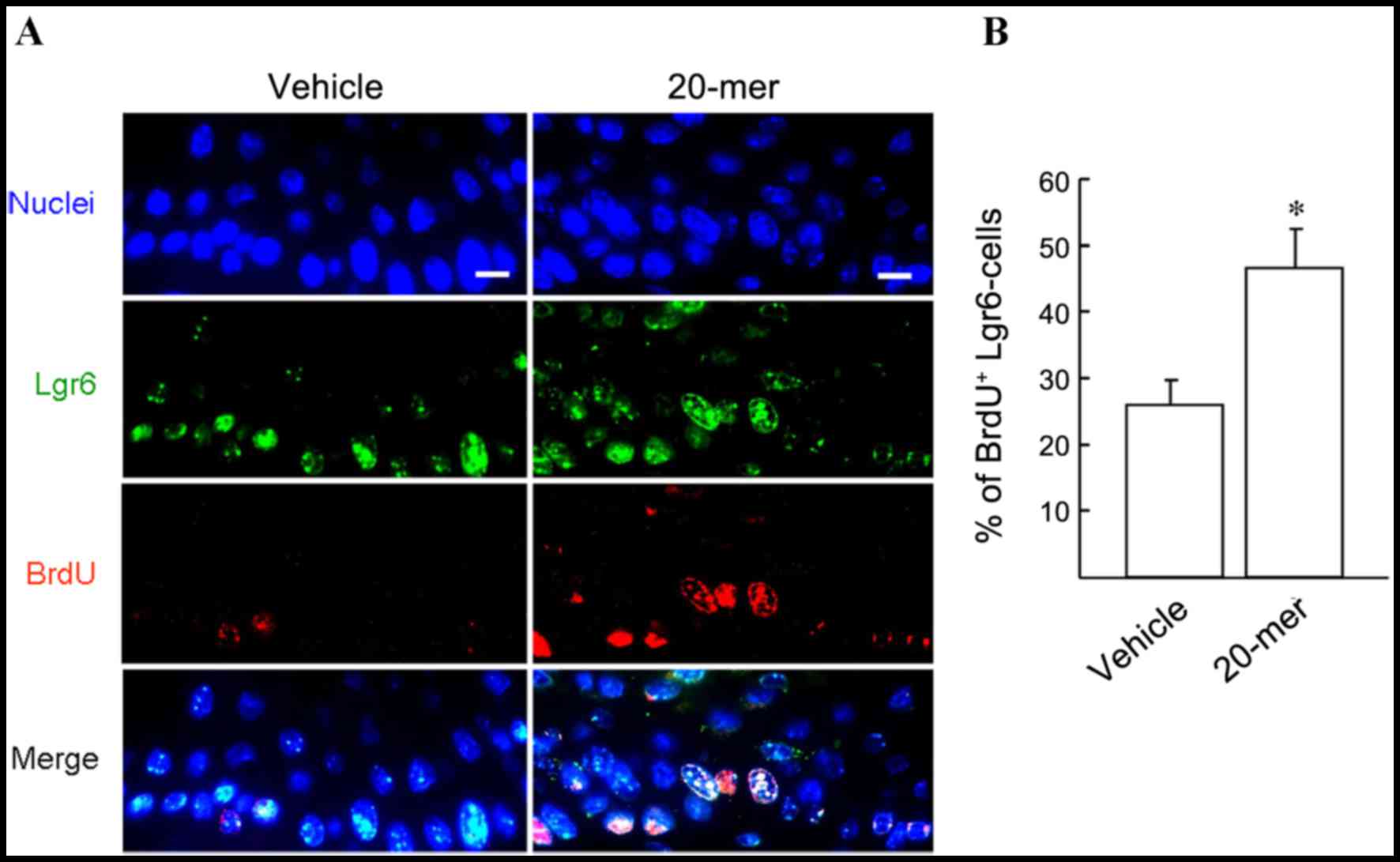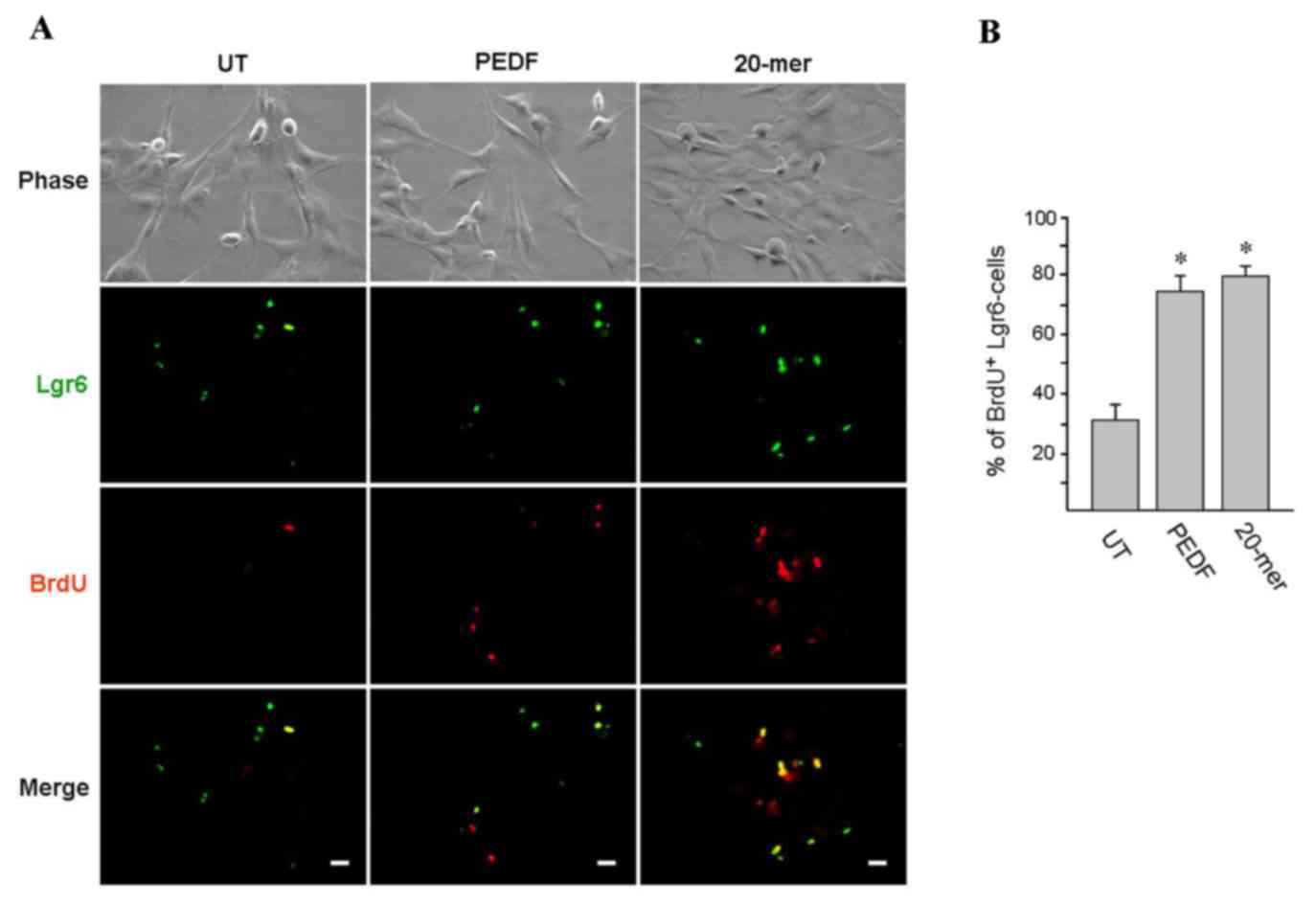|
1
|
Wysocki AB: Wound fluids and the
pathogenesis of chronic wounds. J Wound Ostomy Continence Nurs.
23:283–290. 1996. View Article : Google Scholar
|
|
2
|
Stojadinovic O, Ito M and Tomic-Canic M:
Hair cycling and wound healing: To pluck or not to pluck? J Invest
Dermatol. 131:292–294. 2011. View Article : Google Scholar
|
|
3
|
Werner S, Krieg T and Smola H:
Keratinocyte-fibroblast interactions in wound healing. J Invest
Dermatol. 127:998–1008. 2007. View Article : Google Scholar
|
|
4
|
Lau K, Paus R, Tiede S, Day P and Bayat A:
Exploring the role of stem cells in cutaneous wound healing. Exp
Dermatol. 18:921–933. 2009. View Article : Google Scholar
|
|
5
|
Szpaderska AM, Egozi EI, Gamelli RL and
DiPietro LA: The effect of thrombocytopenia on dermal wound
healing. J Invest Dermatol. 120:1130–1137. 2003. View Article : Google Scholar
|
|
6
|
Werner S and Grose R: Regulation of wound
healing by growth factors and cytokines. Physiol Rev. 83:835–870.
2003.
|
|
7
|
Smola H, Thiekötter G and Fusenig NE:
Mutual induction of growth factor gene expression by
epidermal-dermal cell interaction. J Cell Biol. 122:417–429. 1993.
View Article : Google Scholar : PubMed/NCBI
|
|
8
|
Stewart KJ: A quantitative ultrastructural
study of collagen fibrils in human skin normal scars and
hypertrophic scars. Clin Anat. 8:334–338. 1995. View Article : Google Scholar : PubMed/NCBI
|
|
9
|
Ito M and Cotsarelis G: Is the hair
follicle necessary for normal wound healing? J Invest Dermatol.
128:1059–1061. 2008. View Article : Google Scholar : PubMed/NCBI
|
|
10
|
Ito M, Liu Y, Yang Z, Nguyen J, Liang F,
Morris RJ and Cotsarelis G: Stem cells in the hair follicle bulge
contribute to wound repair but not to homeostasis of the epidermis.
Nat Med. 11:1351–1354. 2005. View
Article : Google Scholar : PubMed/NCBI
|
|
11
|
Persson U, Willis M, Odegaard K and
Apelqvist J: The cost-effectiveness of treating diabetic lower
extremity ulcers with becaplermin (Regranex): A core model with an
application using Swedish cost data. Value Health. 3 Suppl
1:S39–S46. 2000. View Article : Google Scholar
|
|
12
|
Steed DL: Clinical evaluation of
recombinant human platelet-derived growth factor for the treatment
of lower extremity ulcers. Plast Reconstr Surg. 117 7
Suppl:143S–151S. 2006. View Article : Google Scholar : PubMed/NCBI
|
|
13
|
Chen L and DiPietro LA: Production and
function of pigment epithelium-derived factor in isolated skin
keratinocytes. Exp Dermatol. 23:436–438. 2014. View Article : Google Scholar : PubMed/NCBI
|
|
14
|
Ho TC, Chen SL, Wu JY, Ho MY, Chen LJ,
Hsieh JW, Cheng HC and Tsao YP: PEDF promotes self-renewal of
limbal stem cell and accelerates corneal epithelial wound healing.
Stem Cells. 31:1775–1784. 2013. View Article : Google Scholar : PubMed/NCBI
|
|
15
|
Ho TC, Chiang YP, Chuang CK, Chen SL,
Hsieh JW, Lan YW and Tsao YP: PEDF-derived peptide promotes
skeletal muscle regeneration through its mitogenic effect on muscle
progenitor cells. Am J Physiol Cell Physiol. 309:C159–C168. 2015.
View Article : Google Scholar : PubMed/NCBI
|
|
16
|
Petersen SV, Valnickova Z and Enghild JJ:
Pigment-epithelium-derived factor (PEDF) occurs at a
physiologically relevant concentration in human blood: Purification
and characterization. Biochem J. 374:199–206. 2003. View Article : Google Scholar : PubMed/NCBI
|
|
17
|
Blazejewska EA, Schlötzer-Schrehardt U,
Zenkel M, Bachmann B, Chankiewitz E, Jacobi C and Kruse FE: Corneal
limbal microenvironment can induce trans differentiation of hair
follicle stem cells into corneal epithelial-like cells. Stem Cells.
27:642–652. 2009. View Article : Google Scholar : PubMed/NCBI
|
|
18
|
Snippert HJ, Haegebarth A, Kasper M, Jaks
V, van Es JH, Barker N, van de Wetering M, van den Born M, Begthel
H, Vries RG, et al: Lgr6 marks stem cells in the hair follicle that
generate all cell lineages of the skin. Science. 327:1385–1389.
2010. View Article : Google Scholar : PubMed/NCBI
|
|
19
|
Filleur S, Volz K, Nelius T, Mirochnik Y,
Huang H, Zaichuk TA, Aymerich MS, Becerra SP, Yap R, Veliceasa D,
et al: Two functional epitopes of pigment epithelial-derived factor
block angiogenesis and induce differentiation in prostate cancer.
Cancer Res. 65:5144–5152. 2005. View Article : Google Scholar : PubMed/NCBI
|
|
20
|
Matsui T, Nishino Y, Maeda S and Yamagishi
S: PEDF-derived peptide inhibits corneal angiogenesis by
suppressing VEGF expression. Microvasc Res. 84:105–108. 2012.
View Article : Google Scholar : PubMed/NCBI
|
|
21
|
Cai J, Jiang WG, Grant MB and Boulton M:
Pigment epithelium-derived factor inhibits angiogenesis via
regulated intracellular proteolysis of vascular endothelial growth
factor receptor 1. J Biol Chem. 281:3604–3613. 2006. View Article : Google Scholar : PubMed/NCBI
|
|
22
|
Qi W, Yang C, Dai Z, Che D, Feng J, Mao Y,
Cheng R, Wang Z, He X, Zhou T, et al: High levels of pigment
epithelium-derived factor in diabetes impair wound healing through
suppression of Wnt signaling. Diabetes. 64:1407–1419. 2015.
View Article : Google Scholar : PubMed/NCBI
|
|
23
|
De Marzo A, Aruta C and Marigo V: PEDF
promotes retinal neurosphere formation and expansion in vitro. Adv
Exp Med Biol. 664:621–630. 2010. View Article : Google Scholar : PubMed/NCBI
|
|
24
|
Ramírez-Castillejo C, Sánchez-Sánchez F,
Andreu-Agulló C, Ferrón SR, Aroca-Aguilar JD, Sánchez P, Mira H,
Escribano J and Fariñas I: Pigment epithelium-derived factor is a
niche signal for neural stem cell renewal. Nat Neurosci. 9:331–339.
2006. View
Article : Google Scholar : PubMed/NCBI
|
|
25
|
Boxman ILA, Ruwhof C, Boerman OC, Löwik
CWGM and Ponec M: Role of fibroblasts in the regulation of
proinflammatory interleukin IL-1, IL-6 and IL-8 levels induced by
keratinocyte-derived IL-1. Arch Dermatol Res. 288:391–398. 1996.
View Article : Google Scholar : PubMed/NCBI
|
|
26
|
Waelti ER, Inaebnit SP, Rast HP, Hunziker
T, Limat A, Braathen LR and Wiesmann U: Co-culture of human
keratinocytes on post-mitotic human dermal fibroblast feeder cells:
Production of large amounts of interleukin 6. J Invest Dermatol.
98:805–808. 1992. View Article : Google Scholar : PubMed/NCBI
|
|
27
|
Florin L, Maas-Szabowski N, Werner S,
Szabowski A and Angel P: Increased keratinocyte proliferation by
JUN-dependent expression of PTN and SDF-1 in fibroblasts. J Cell
Sci. 118:1981–1989. 2005. View Article : Google Scholar : PubMed/NCBI
|
|
28
|
Sarojini H, Estrada R, Lu H, Dekova S, Lee
MJ, Gray RD and Wang E: PEDF from mouse mesenchymal stem cell
secretome attracts fibroblasts. J Cell Biochem. 104:1793–1802.
2008. View Article : Google Scholar : PubMed/NCBI
|















